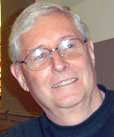All right, so if you’re friends are fat, you are likely to be fat as well…on a percentage basis, that is. But the good news is that the reverse is true as well. Good health can be just as contagious.
If you work out alone, if you diet alone, if you walk, jog or run alone, good… but if you do these things with other people such as family and friends, chances are very good that you will experience better results. You may know this already. If you get into the routine of going for an early morning walk with one or several buddies, just knowing that they will be waiting for you precludes you from the old, “Oh, I don’t feel like it this morning…” trick your brain and body like to play on you occasionally.
Get the family involved in eating healthily, exercising together and develop a family lifestyle that will benefit everyone. It is too easy to plunk down in front of the TV or computer and spend hours in a semi-comatose, couch or computer potato state. Make it a contest …set a total weight loss goal. Having objectives is part of all planning and helps you to stay on track!
Return to My Weight Loss Success website
Visit all my blogs:
